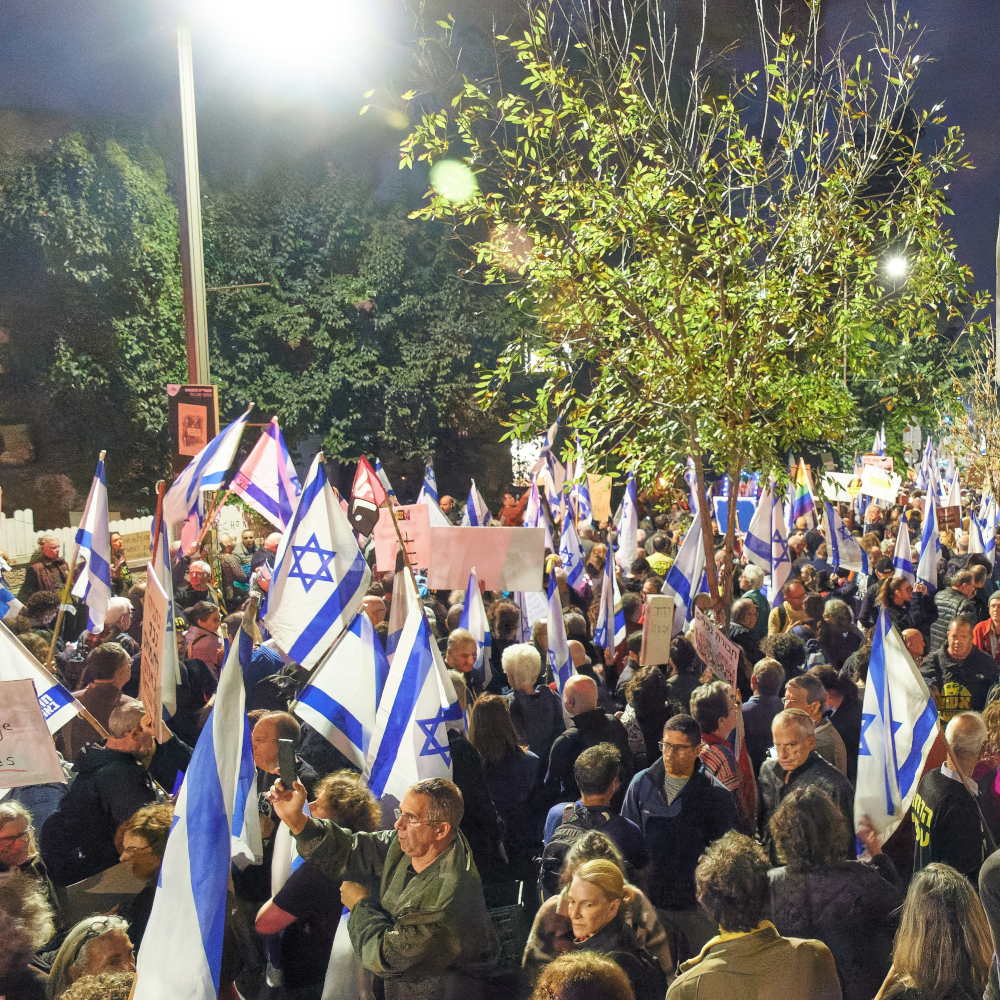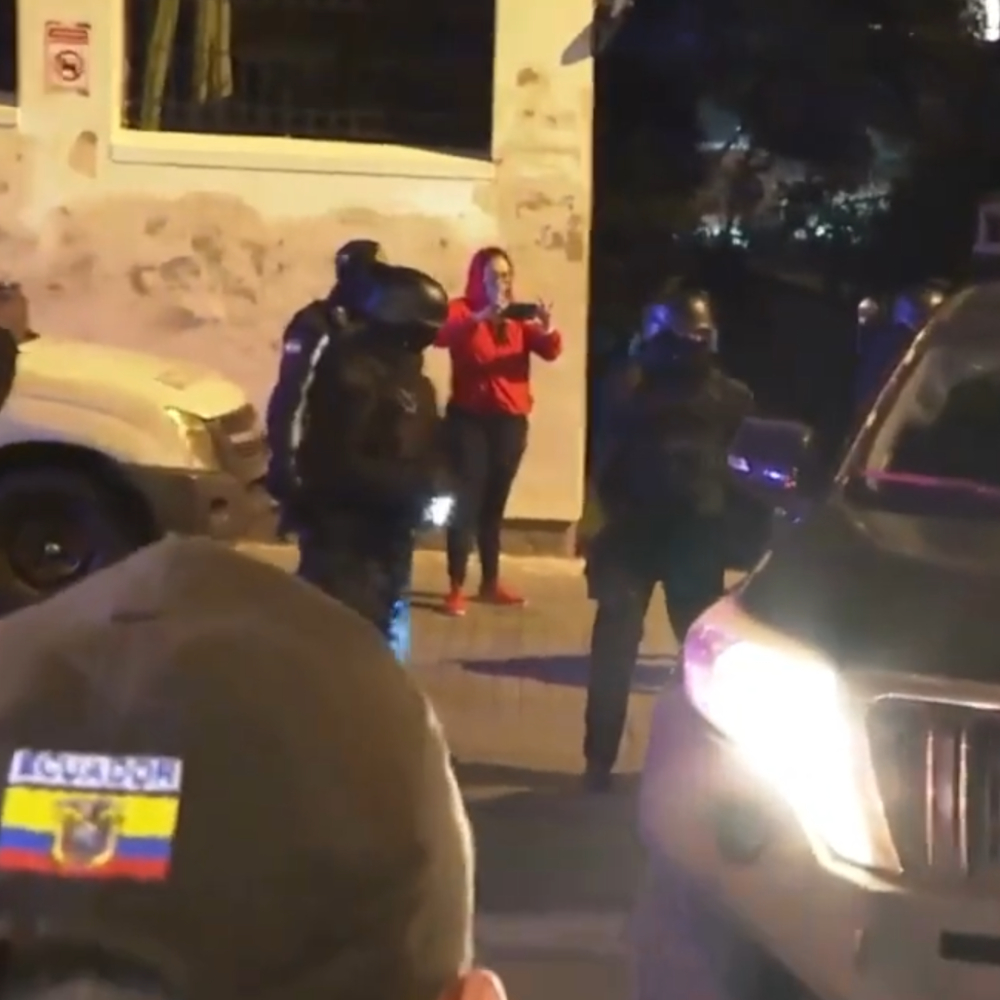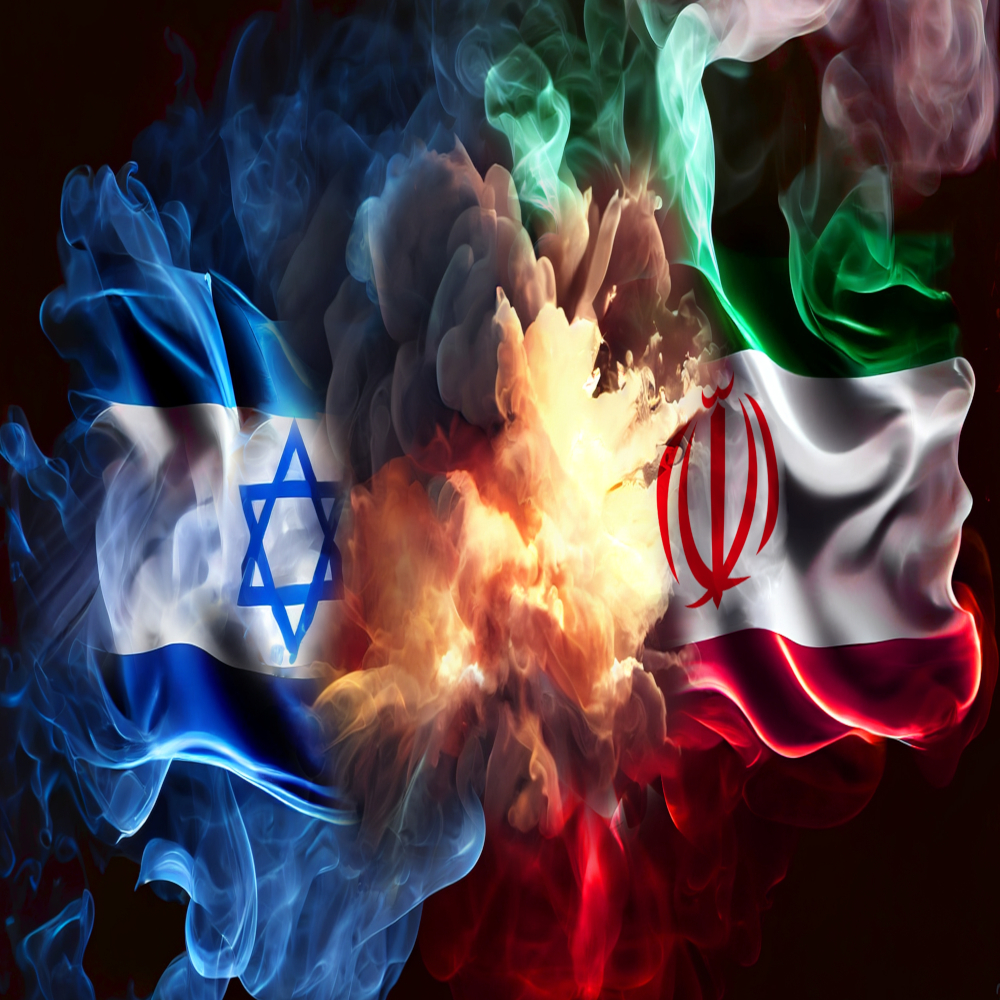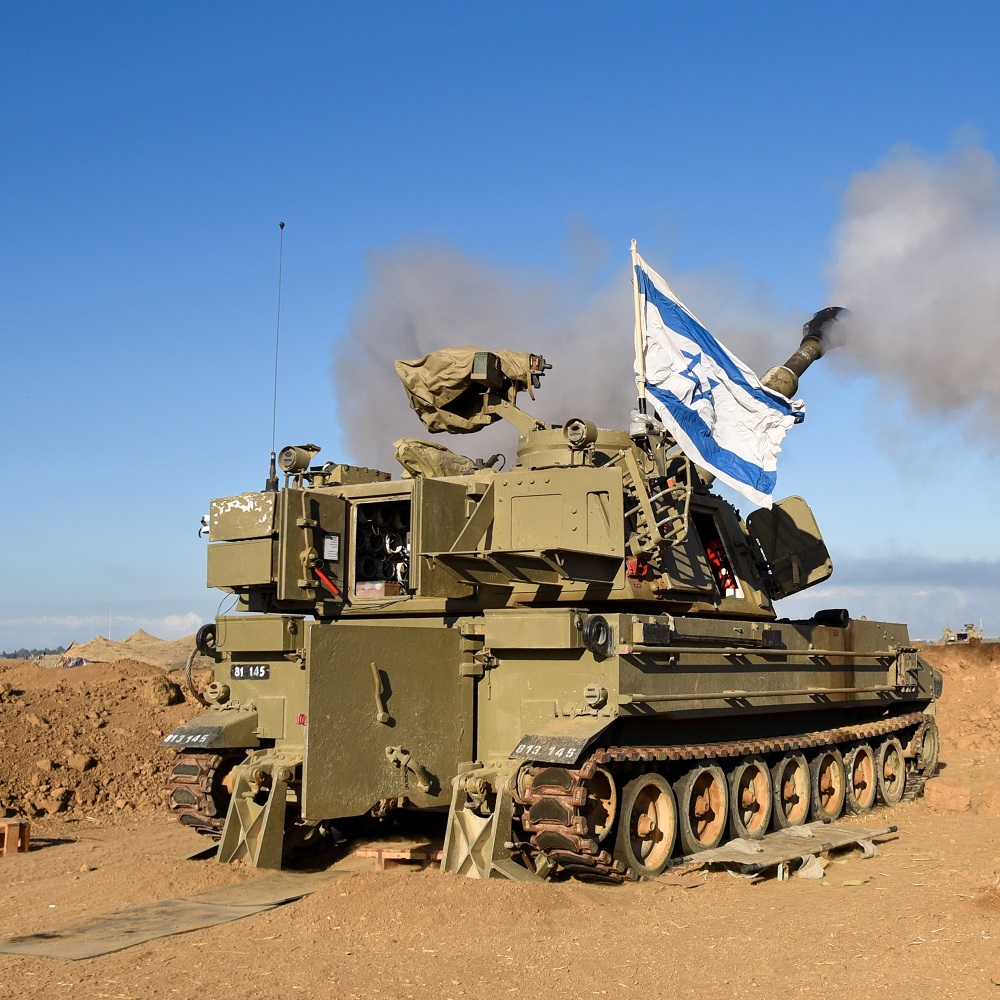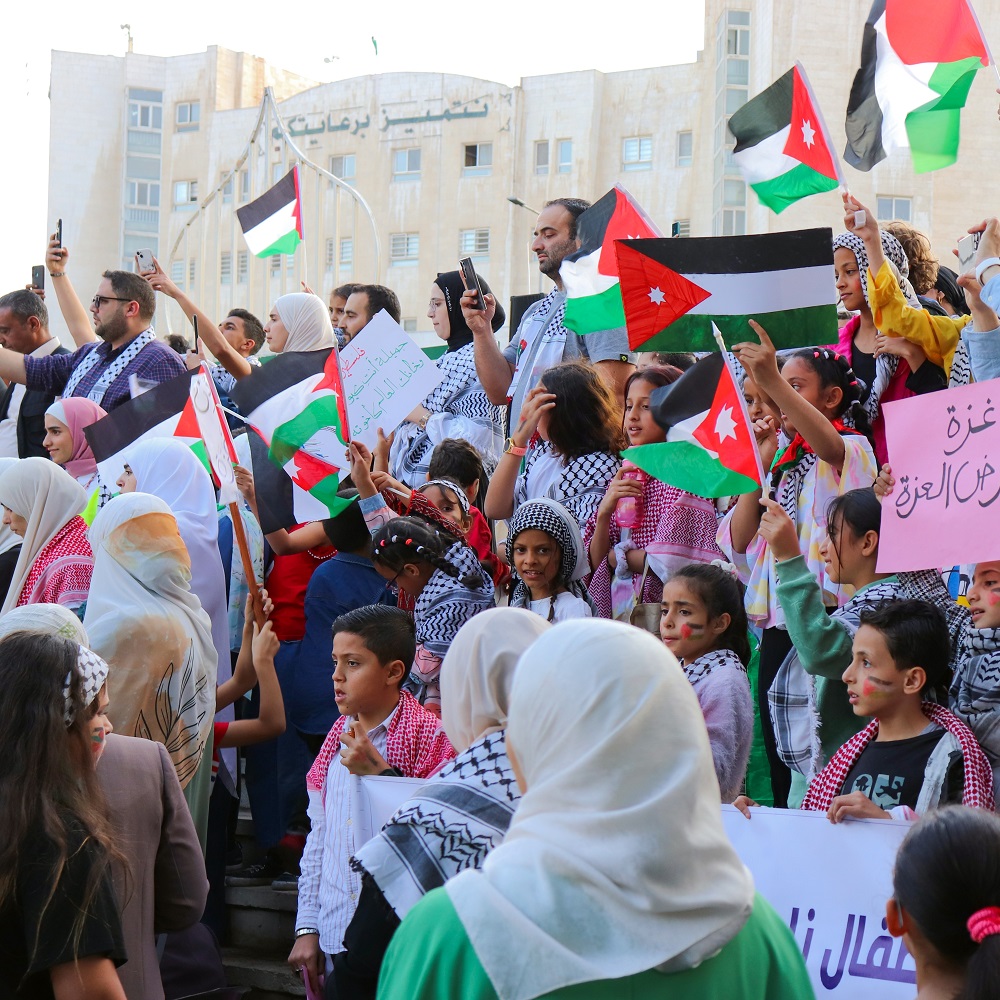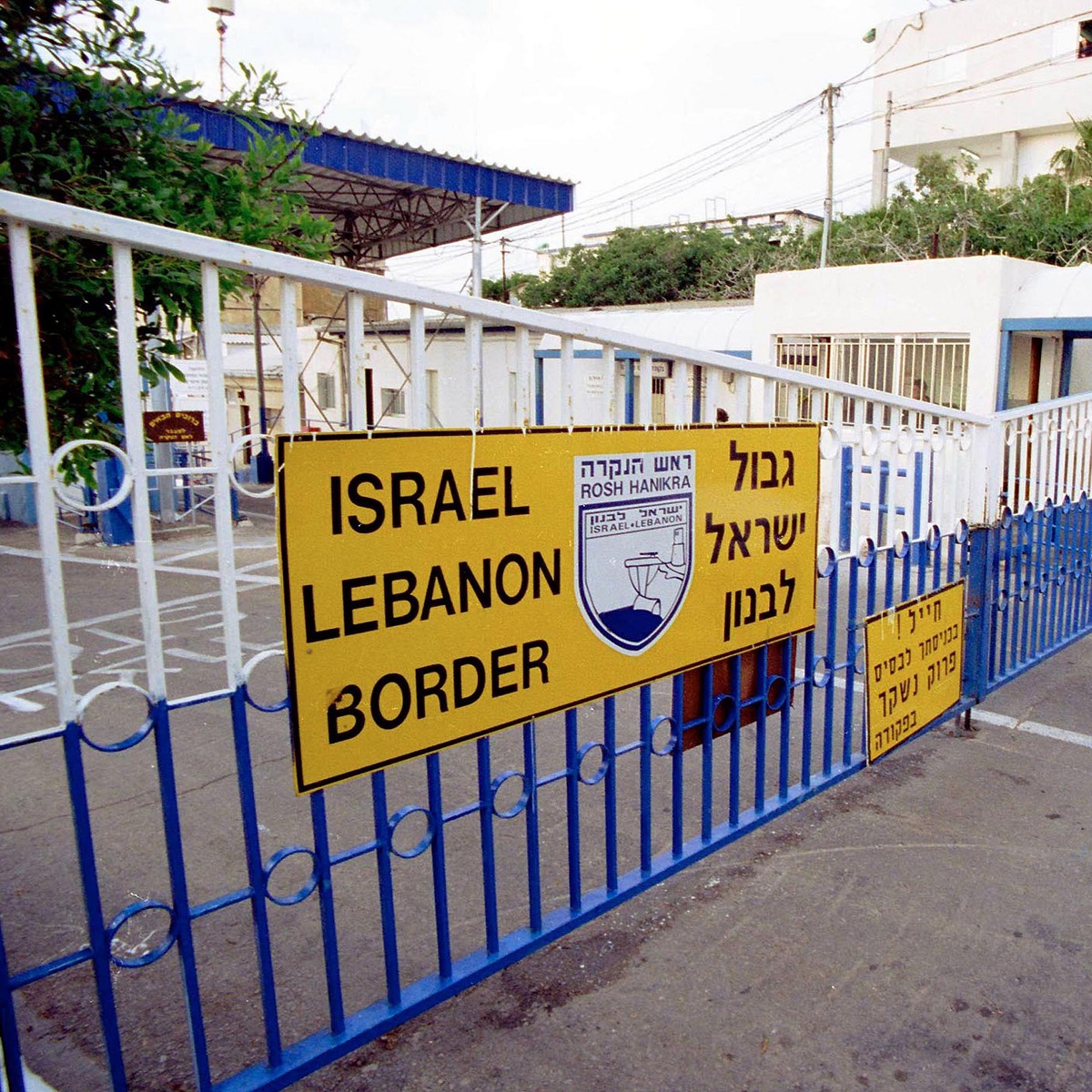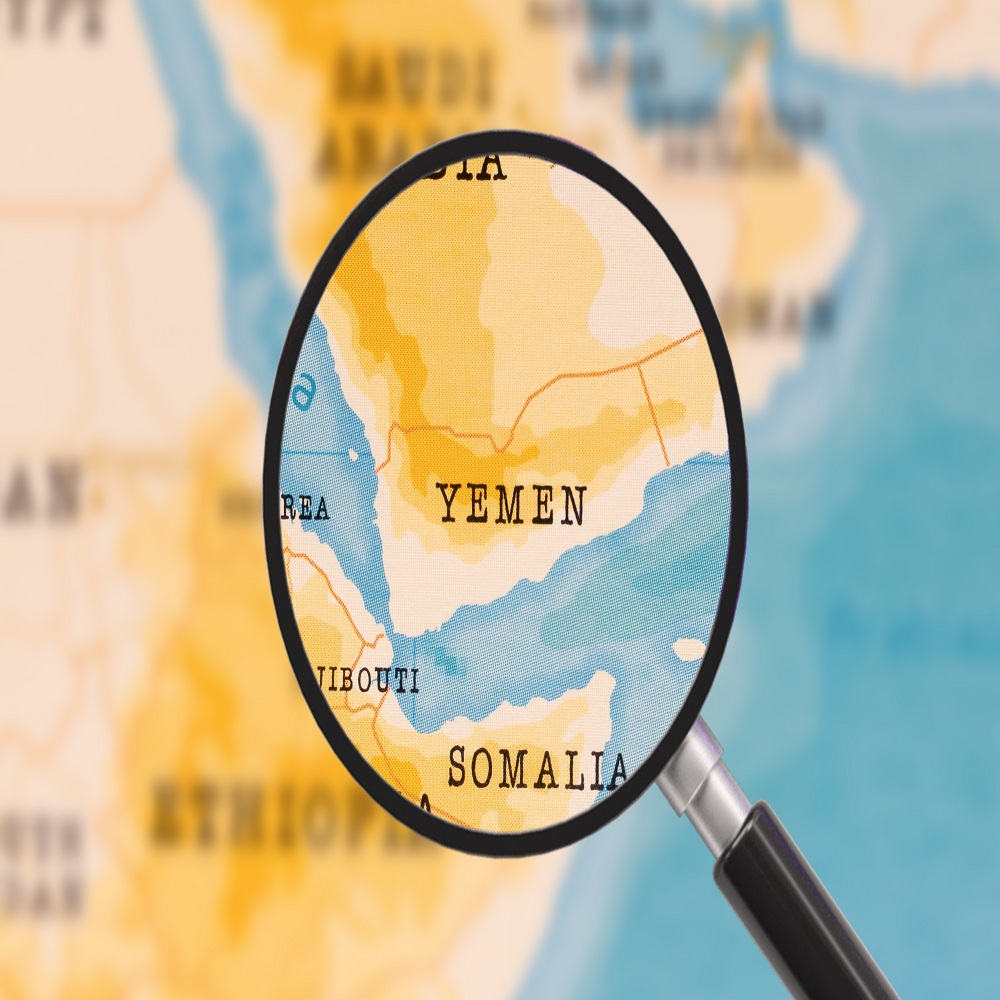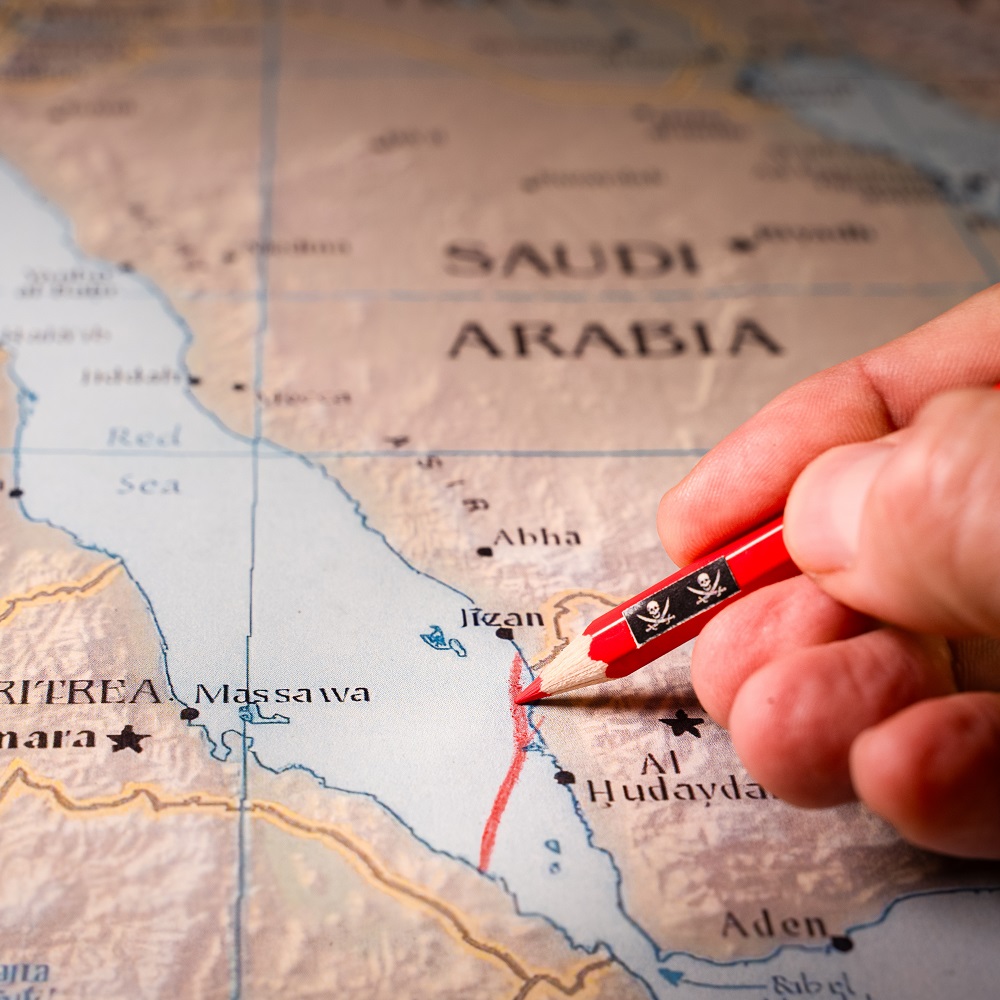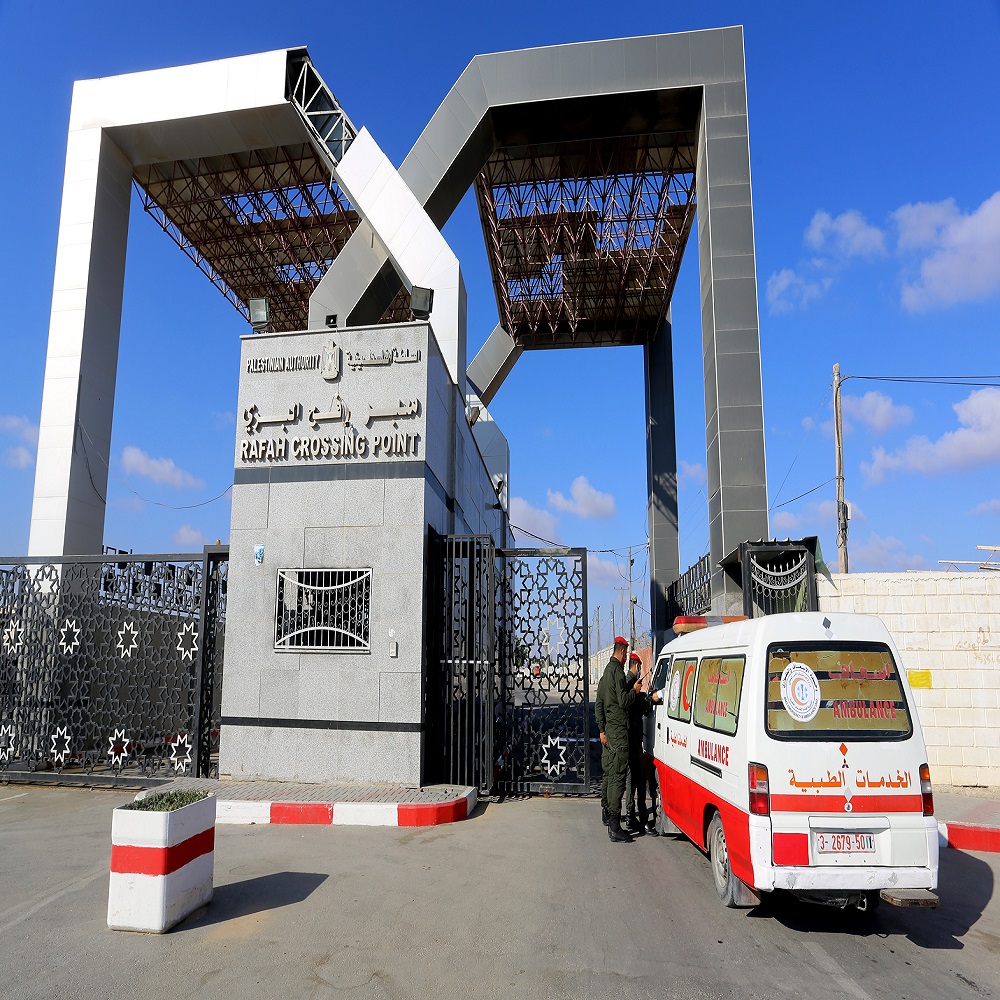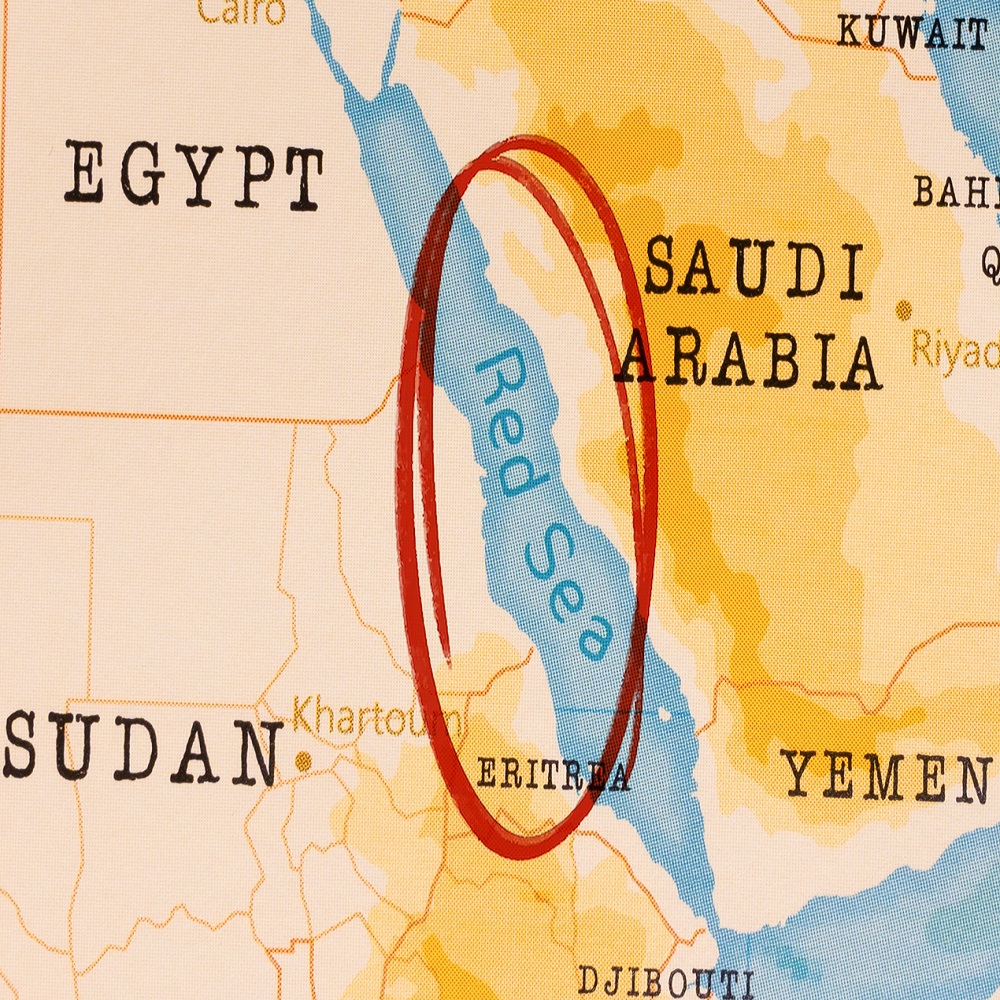Expanding Israel’s Ground Forces or Prioritizing Technology?
by Azar Gat
Since Hamas’s attack and the outbreak of the war in the Gaza Strip, the public discourse has been impressed by the view, which Major General (res.) Itzhak Brik in particular voiced even before the war, that the IDF is too small given the threats; that reliance on technology has led to dangerous neglect and reduction of the ground forces; that the air force is disproportionately funded at the expense of the ground forces; and that there is a need to increase the defense budget significantly and permanently, beyond covering the expenses of the war. This article argues that these claims are misleading and even damaging, both militarily and economically. It contends that the current size of the IDF and that of the main fighting ground formations have proven adequate for future challenges. Despite known failures—particularly in the field of intelligence—the article asserts that elite technology, combined with the quality and determination of its combat troops, has given the IDF its most significant advantages in the war. Therefore, the article advocates to continue prioritizing the investment in technology, in addition to significantly expanding and reforming the inexpensive low-tech local and community ground defense forces, which have been neglected, with disastrous consequences.
We start with the events of October 7. In addition to the significant failure in intelligence, it is widely agreed that the operational mishap was even more shocking. Contrary to the accepted view, the Gaza Division had enough forces available to effectively cope with Hamas’s attack. These included the 77th Armored Battalion of the 7th Armored Brigade, as well as infantry forces from the Golani and Givati Brigades—all of which were first-line regular forces. However, some of these forces had been granted leave for the Simchat Torah holiday weekend. Incredibly, those who remained were not stationed at dawn in combat readiness in their positions or armored fighting vehicles, and they were caught unprepared. As a result, Hamas fighters were able to photograph themselves dancing on unmanned and burned Merkava tanks and Namer armored personnel carriers (APCs) in their parking lot. Even the 400 combat soldiers and the 12 Merkava 4 tanks that reportedly remained in the Gaza zone on that Saturday could have thwarted Hamas’s attack if they had been stationed in their positions. Additionally, combat helicopters and unmanned aerial vehicles (UAVs) on standby could have aided in defeating Hamas. Furthermore, there was a fiasco with the emergency squads in the border communities, which had faced cutbacks and restrictions in the years leading up to the war. In the few communities, like Nir Am, where the emergency squads were able to organize themselves—even to a minimal extent—they played a significant role in repelling the attack and preventing a massacre.
The shock of October 7, the subsequent recognition of the serious security reality, and its potential to deteriorate into a regional war have strengthened the assessments that the IDF, particularly the ground forces, are facing missions and challenges that are too great for their current size. Since the 1980s and 1990s, the IDF’s order of battle has been significantly reduced. The number of tanks in the IDF has been cut down to approximately one-third of its peak in the 1980s, though the number of infantry brigades, especially in the regular forces, has increased to adapt to the changing face of the battlefield. The number of fighting field divisions has been cut in half. According to information made public during the war, the IDF currently has six or seven such divisions (the 36th, 162nd, 98th, 99th, 146th, 252nd, and parts of 210th). It is worth noting that this is similar to the number of divisions the IDF had during the Yom Kippur War (six divisions), when it faced the Egyptian army, the Syrian army, and expeditionary forces from other Arab countries, which altogether consisted of about 18 regular enemy divisions and hundreds of thousands of soldiers, along with their heavy equipment, including around 4,500 tanks. As an additional point of comparison, the United States conquered Iraq using four or five divisions, supported by overwhelming air superiority.
Recall that during the current war in Gaza and with Hezbollah, the IDF called up approximately 300,000 reserve troops, in addition to the standing army. They faced around 30,000 armed fighters in Gaza and a similar number in Lebanon. This gave Israel a clear numerical advantage, not to mention its far superior combat equipment and firepower. In the ground invasion of northern Gaza alone, the IDF deployed four divisions (the 36th, 162nd, 252nd, and 99th)—more divisions than were used against the entire Egyptian army in the Six-Day War and the Yom Kippur War. Furthermore, the 98th Division operated in Khan Yunis with eight (!) brigades (which were reduced by half as the intense combat declined)—a number that is almost equal to the total number of brigades deployed against the Egyptian army in the Sinai Peninsula and the Gaza Strip during the Six-Day War. It is difficult to imagine a greater concentration of force than this. Meanwhile, Central Command forces have been successfully and aggressively targeting terrorist activities in the West Bank, while in northern Israel, the 146th Division reinforced the 210th Division against Hezbollah after the war broke out.
But doesn’t the IDF lack divisions for a simultaneous offensive against Hezbollah in southern Lebanon to remove the threat to the Israeli communities along the border? Let us recall the main considerations for operating in Lebanon or for refraining from doing so. Since the beginning of the war, the United States has vetoed such operation, in favor of diplomacy. Moreover, there are serious questions regarding the prospects of such an operation. If the IDF conquers southern Lebanon, which it is certainly capable of doing, Israel will face two choices: remaining there and dealing with Hezbollah’s guerrilla warfare indefinitely, as it had before the withdrawal from Lebanon in 2000, or withdrawing and watching Hezbollah return. Neither option is promising, especially given the possibility of escalation into a full-scale missile war. Indeed, in addition to these difficult questions, the concentration of efforts against Hamas has also played a role. Israel’s defense doctrine has always prescribed focusing the IDF’s efforts, both on the ground and in the air, against a single adversary at a time. This includes the use of internal lines to transfer forces from one front to another after achieving victory on one of them. Finally, does anyone really want to see a return of the large number of divisions and thousands of IDF tanks that crawled along the crowded roads of mountainous southern Lebanon in 1982?
Still, some argue that the Gaza, Lebanon, and the West Bank are only the tip of the iceberg in the threat that Israel faces in a potential multi-front war. In this most severe scenario, the threat also includes the Iran-backed militias in Syria and Iraq, the Houthis in Yemen, and even Iran itself, and possibly also some Arab citizens of Israel. However, it should be noted, in the context of claims of excessive cutbacks to the ground forces, that all of these potential arenas, except for those already active in Gaza, southern Lebanon, and the West Bank, and not including the Arabs of Israel, are distant theaters of operations that do not require or have use of additional ground forces. Without mentioning the Americans, the air force—possibly with the assistance of special forces, and in certain scenarios, in cooperation with the navy—would conduct the main activity in these arenas. This is the same air force that some claim is being prioritized at the expense of the ground forces. In practice, the air force’s share of the IDF’s budget, which is around 50 percent, has remained at the same level since at least the 1960s. Furthermore, contrary to the impression that has emerged, the air force too has experienced a reduction in the number of its aircraft by half in recent decades. Finally, we must not forget that it was the air force’s precision one-ton bombs that paved the way for the ground forces, even in the nearby theaters of operation. In the exemplary inter-service cooperation in the campaign in the Gaza Strip that crushed Hamas’s organized resistance, the air force made a significant contribution to the relatively low number of casualties among the ground forces.
Some ask, what guarantee is there that Egypt will not turn around and join the war against Israel—in its current regime or under a future Islamic regime? But if so, why not also add Jordan and Syria, and maybe also Saudi Arabia, now or in the future, to the roster of potential enemies? After all, according to the popular—and erroneous—argument heard since October 7, we must no longer rely on assessments of intentions, and only judge according to capabilities.
For the sake of this argument, let us focus on Egypt. Egypt’s interests and political orientation under President Abdel Fattah el-Sisi are clear and they most definitely do not involve a return to war against Israel. Of course, if an Islamist regime comes to power again in Egypt, Israel will need to make security adjustments. However, it is important to remember that Egypt’s dependence on the provision of American weapons and munitions is at least as great as, if not greater than, Israel’s dependence, and that the prospect of American support for Egypt waging war against Israel is nil. Furthermore, in order to wage war against Israel, the Egyptian army would need to cross the Sinai Peninsula—a large-scale classic killing ground, as it was in past wars, lacking population and without natural cover—where the high-signature Egyptian army would face destruction mainly from the air. Indeed, given the size of the Egyptian air force and its relatively advanced aircraft, the budgetary weight given to the Israeli air force at its current size is of supreme importance.
Despite the failure of intelligence and additional technology-based systems, like the “see-and-shoot” system, the IDF’s great advantage in the ground invasion of the Gaza Strip, aside from the heroism and determination of its troops, lies primarily in technology. The ground forces, air force, intelligence, and other firepower units, closely communicating and cooperating, possess unprecedented capabilities in rapidly identifying and destroying Hamas fighters and their positions in highly complex urban and underground environments. Some of the technological advancements made public include computerized data communication and intelligence systems based on artificial intelligence (AI), UAVs and drones for intelligence and attack purposes, as well as guided rocket weapons and mortars. The smart-shooter Smash artificial intelligence sight device for infantry rifles is also worth mentioning. These advanced capabilities, along with the Trophy Active Protection System equipped on IDF tanks and APCs, are the main reasons for the relatively low number of IDF casualties and the success of the ground advance. The Trophy system provides protection against Hamas’s anti-tank armaments, particularly rocket-propelled grenade (RPG) launchers. While no system can guarantee complete protection, the Trophy system has demonstrated high interception rates, making it a groundbreaking Israeli innovation with global significance. Additionally, the interception capability of the Iron Dome—another unique Israeli technological development—has prevented significant damage from the thousands of rockets launched by Hamas against Israeli population centers, as the IDF’s ground invasion dismantles the organization’s defenses in the Gaza Strip.
What, then, should Israel invest in? Essentially—beyond various adjustments and supplements, such as reinstating the mandatory military service at three years, certainly in combat units and other essential units—Israel should invest in further enhancing technological capabilities, and not in increasing the number of its field formations and tanks. As we have seen, and contrary to popular belief, the IDF did not lack forces during the ground invasion in Gaza; on the contrary, the concentration of forces that were utilized was enormous by any comparative measure. This was primarily due to the complexity and sophistication of Hamas’s underground network in densely populated urban areas, for which the IDF sought to find solutions, many improvised during combat. A high-priority necessity, thus, is the expedited development of capabilities for discovering and neutralizing underground infrastructure—in the Gaza Strip, in Lebanon, and in other places. To this end, a variety of tactical and technological means will be needed, including, as has already been partly revealed, drones and AI-guided (under)ground robots that operate inside tunnels.
An equally high, if not higher, priority is to expand and enhance the active protection systems of the IDF’s tanks and other armored fighting vehicles (AFVs). As proposed in an article that I wrote before the war (“The Future of the Tank and the Land Battlefield,” INSS, July 20, 2023), we are currently in the early stages of a profound revolution in ground warfare, the context of which is not yet fully understood. This revolution is the Third Technological Revolution of the Industrial Age—the electronics and computing revolution—that the world has experienced since the mid-20th century, and it has already had a significant impact on air and sea warfare. In naval warfare, battleships with heavy armor and large guns, which once dominated the seas, have been replaced by electronically-guided missile armaments launched from ships, aircraft, and land. Defense as well is now achieved through electronically-guided interception and electronic jamming. Similarly, in aerial warfare, kinetic gun armaments and “dumb” bombs have been replaced by electronically-guided missile armaments and electronic defensive jamming for air-to-air, surface-to-air, and air-to-surface fighting. By comparison, due to the complexities of ground warfare, which involves varied terrain and extensive cover, and a large number of potential targets, the electronic revolution’s impact on ground warfare has been slower and more gradual. Nonetheless, we are currently witnessing a revolutionary turning point in ground combat.
Since the beginning of the ground operation in Gaza, many have rightfully acknowledged the critical role played by tanks in the campaign, while also criticizing what they mistakenly perceived as a diminishing of the IDF’s tank’s power and importance in recent decades. It is true that the number of tanks in the IDF has significantly decreased as part of the overall downsizing of the IDF, and also due to changes in the tank’s role on the battlefield. Gone are the days when heavily armored formations engaged in direct combat with their cannon fire as the center of ground warfare. Tanks now have become targets for long-range guided munitions before they even come within the firing range of each other’s kinetic guns. Moreover, their heavy armor is no longer effective against advanced anti-tank missiles with dual-charge warheads, which strike their less protected top. Although such missiles have not yet been used in the Gaza Strip, they are starting to appear in Lebanon.
The war in Ukraine has clearly demonstrated this vulnerability, even in advanced western tanks supplied to Ukraine. The absence of active protection systems for tanks in Ukraine, such as the Trophy and Iron Fist systems developed in Israel and now being acquired by the armies of the United States, Germany, and the United Kingdom, has contributed to the failure of the Ukrainian offensive efforts and the stalemate in the fighting, reminiscent of World War I. Indeed, the current interpretation of the stalemate overlooks the significance of active protection systems for tanks. Furthermore, in contemporary ground combat, tanks primarily provide immediate mobile firepower at the front lines. However, it is uncertain whether tanks armed with high-muzzle-velocity kinetic cannons, which were originally designed for warfare against other tanks, is still suitable for the changing nature of the battlefield. A more appropriate approach would seem to involve guided missile armament, combined with a 30 mm automatic gun; or, alternatively, a high-caliber, low-muzzle-velocity gun that is lighter and has reduced recoil. Such a gun would allow for dual-purpose fire, employing both missiles and high-explosive shells. This is comparable to the 152 mm gun, planned over half a century ago for the MBT-70 tank and the Sheridan light tank, which was ahead of its time. Additionally, the heavy armor of tanks (and heavy APCs such as the Namer) has reached its limits, and it is expected to be largely replaced by electronically-guided interception and jamming measures.
Substantial changes are necessary in the tank’s design. The Merkava 4 and its upgrade, the Barak tank, are masterpieces and the best tanks in the world. However, the future does not lie with high-muzzle-velocity kinetic cannons and super-heavy armor. Israel’s Carmel project for the tank of the future is the way forward. In any case, the IDF has no shortage of tanks. What it requires is to equip all of its AFVs with active protection systems and continuously upgrade these systems based on battle experience. The vulnerabilities discovered in these systems need to be rectified, and the cover of the systems must be completed from all angles, including protection against drones and loitering munitions.
Protection against UAVs and drones of all types and sizes is also crucial, including against targets that are not AFVs. This has been demonstrated to an unprecedented extent in Ukraine and the current conflicts in Gaza and Lebanon. The IDF has been a global pioneer in developing intelligence and attack systems of this nature. However, it seems that less attention has been given to developing defensive measures for intercepting and jamming enemy systems.
In addition to ground warfare, solid-state laser systems for intercepting ballistic missiles, cruise missiles, and UAVs are also of utmost importance. Some argue that none of the defense systems currently available can effectively counter the hundreds of thousands of missiles that Iran and its proxies in the Middle East could launch toward the Israeli home front in an all-out war. However, even if this argument holds true, it cannot be used in conjunction with the notion that the Israeli air force is receiving too much funding that could be allocated to ground forces. Israel’s primary response to the massive missile threat on the home front by Iran and its proxies lies not in defense but in deterrence, in which the air force plays the central role. This has been evident in the mutual deterrence that has existed thus far with Hezbollah, and even more so with Iran in the case of a regional war. In such a scenario, Iran should be concerned, and it appears that it is indeed concerned about, potential Israeli strikes on its infrastructure in areas such as power stations, oil fields, energy transmission, and ports.
A related question is how much Israel should allocate to precision surface-to-surface missiles as alternatives to aircraft-launched missiles and bombs in varying war scenarios. However, it is important to note that such substitutions are particularly applicable in nearby combat zones, as there is still no real competition with the air force’s capabilities at longer ranges.
So much for high-tech. While the majority of the IDF’s investment should focus on enhancing its technological capabilities, there is a clear need to significantly expand and reconstruct the ground forces in the cost-effective and inexpensive realm of low-tech local ground defense. The worst aspect of the October 7 fiasco was in that field. It is hard to believe, but a few years back, the IDF actually implemented budget cuts to the minimal payments made to the civilian security coordinators in frontline communities. Furthermore, due to theft concerns, the rifles stored in their homes were taken away from the emergency squads and placed in a central armory.
Before the Six-Day War, when enemy armies were stationed right on the other side of the border, a system of local defense communities were an integral part of the IDF’s first line of defense. However, after 1967, when the borders were pushed further away from the settled areas of the country and with the increased mechanization of Arab armies, the significance and capabilities of community-based local defense decreased accordingly. However, given the changing nature of threats and the emergence of militias and armed organizations across the borders, the ability of emergency squads in communities to serve as the first, vital, and readily available line of defense has returned in full force. As such, their members should be released from all other reserve duties, and instead be properly organized, armed, and trained for their task.
One reason raised for increasing the number of field formations is the anticipated need for additional reserve service due to the war. However, it is important to differentiate between different aspects of this burden. As long as the war continues, frontline reserve combat units will have to serve for an extended period. Israel should perhaps consider expanding the reserve forces that will be rotated in existing AFVs. This would provide more manpower without requiring additional equipment, as the IDF already has an abundance of tanks. On the other hand, the main need for reserve service will be to reinforce the defense system along the borders and protect the communities. It would not be appropriate to use units from frontline, “heavy” combat formations, armed with advanced and costly equipment, for this purpose. Instead, local defense units, which are much less heavily armed and much less expensive should be allocated for the task. The IDF’s establishment of the new Hashomer Brigade, composed of reservists from regular border defense units, is a positive step in this direction. Additionally, it would be worthwhile to establish national guard units based on individuals who have been released from the reserves in recent years due to budget cuts. These units would secure roads, critical facilities, airports, and communities within Israel in the event of a conflict. The necessary equipment and armaments for these units would be relatively light and inexpensive.
Once bitten, twice shy—but this can also take a heavy toll. Following the trauma of the Yom Kippur War, the IDF doubled in size and defense expenses jumped to between a quarter and a third of GDP. This increase made a decisive contribution to the “lost decade” of the Israeli economy after that war. It is difficult to blame the defense leadership of the time. The trauma was great and largely justified, and alternatives in qualitative rather than quantitative directions only started to appear and become practical in ground warfare in the 1980s.
In conclusion, the IDF, with the exceptions mentioned, is built more or less correctly with respect to the threats on the borders. When it comes to more distant threats, the air force remains the main deterrent and offensive response, in addition to its central role in the inter-service battle in the immediate theaters of operation. In view of the existing balance of power and given its overwhelming numerical superiority, the main things that the IDF is missing are primarily not in the realm of offensive field formations. The ranks need to be filled, there may be various expansions and supplements, and, of course, we can always want more—especially when it comes to security. But as Ben-Gurion determined, security needs and expenses must be balanced with other vital needs. After covering the major military and civilian costs of the war, replenishing stockpiles, and returning vehicles to service—a large and necessary one-time expense—there is no room for increasing the regular defense budget beyond 4.5–5.5 percent of the net GDP (before American aid).
In military history, there are more than a few cases of drawing the wrong lessons from wars. Following the Spanish Civil War, for example (1936–1939), it was decided in the Soviet Union that the future vision of mechanized war advanced by Marshal Mikhail Tukhachevsky and his comrades in the top brass of the Red Army (who had been executed in Stalin’s purges) did not prove itself. The mechanized armies and corps that they had established were disbanded as a result and were hurriedly reassembled only after the Germans proved the doctrine’s effectiveness between 1939 and 1941. The Soviet Union paid dearly for this mistake with the German invasion. We must be careful to avoid the trauma of October 7 leading Israel to draw the wrong lessons. Contrary to the prevailing mindset, the main factor in the IDF’s exceptional success in the Gaza Strip, alongside the determination and heroism of its combat soldiers, has unequivocally been its decisive technological advantages. Israel should continue to deepen them in the mentioned directions.
